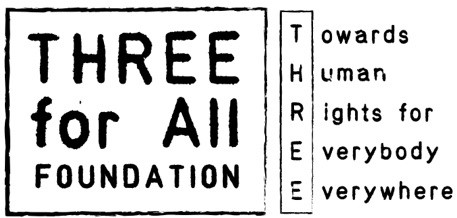Swimming in Two Rivers - Sunraysia, Australia
“The Murray River runs deep, strong and constant. Through the hottest summers and the longest droughts it flows through Sunraysia, bringing fish and other food, fresh water, and nutrients for the land. The Darling starts in a different place. Sometimes its flow is strong and fast, other times it doesn’t run at all; sometimes the water is warm, sometimes cool; sometimes it carries garbage from upstream, other times it runs rich with soils from the North. Each river has its own unique animals and plants; different minerals and different treasures caught in the current.
When the rivers meet they run alongside for a time – different colours, different temperatures, different flows. It takes some time for the two to mingle. As the two rivers become one the strength of the current increases.
The deep, strong and constant flow of the Murray is like the strength, power and resilience of Aboriginal culture. The Darling’s flow is changeable and rich, like the many and varied opportunities contemporary Western culture offers us.
To stay afloat at the spot where two currents meet takes more strength and resilience than to swim in either one or the other, but for those who do it there are two sources of nourishment and two streams of opportunity. All the riches of two worlds can be gathered by those who swim in the current of two great rivers. ”
The Swimming in two rivers project was developed by THREE at the request of Mallee District Aboriginal Services and the Northern Mallee Community Partnership. THREE provided technical support and overall coordination to this large partnership project focused on building resilience and preventing suicide for young Aboriginal people across Australia's Sunraysia region from 2014 until late 2016. The metaphor above refers not only to the concept of resilience but also to the project's overall methodology - all of our activities aimed to strengthen connection to Aboriginal culture and community AND to build stronger connections to education, employment and mainstream opportunity. In developing our strategies and activities we looked to learn from Aboriginal tradition and culture AND from the international evidence base for effective practice. The project focused on four areas of activity:
ADDRESSING AND CONTAINING THE HURT
These activities recognise that much of the community is currently grieving and traumatised by recent loss, and that an urgent response is required to contain trauma and the risk of suicide contagion when a death occurs. The response involved utilising existing community networks and structures to inform and engage the community, identifying and responding to individuals and groups identified as at- risk, supporting culturally appropriate expressions of grief, developing protocols and MoUs with emergency services and mental health services for timely postvention activity should another suicide occur, addressing the impact of suicides on Aboriginal staff in Aboriginal and mainstream services that are expected to respond to these tragedies, and developing regional communication and communication with all levels of government, focused on suicide prevention.
BRINGING PEOPLE TOGETHER
Area Two recognises the communities’ need to see activity that has positive impacts in the short term and in which they can participate actively and feel heard. It focused on the development of evidence based activities for building resilience amongst three groups –
School aged children, with programs that build school participation, engage them with mentors, and provide opportunities for organised fun and play.
Peer-based programs for young adults, with discussion and activity groups that provide a safe forum for discussing challenging issues and build towards participation in employment, training and genuine community development activities.
Programs that connect adolescents with Elders and other respected adults, support spending time on-Country and provide opportunities for participating in cultural activities.
Through focus-groups and respectful partnerships these programs were developed and delivered in collaboration between Aboriginal individuals and community organisations and experts in evidence-based group activity.
3. BUILDING OPPORTUNITIES AND CAPACITIES
Area Three focuses on strengthening what works by engaging with and building capacity across relevant sectors for suicide prevention and resilience building activity. The focus was on working with schools, sporting programs and clubs, youth programs and other sectors to promote good practice and develop new opportunities for engaging with Aboriginal young people and with families. A number of cross-sectoral approaches were also included, including utilising the support of an Aboriginal cultural advisor, developing a community reference group, assisting mainstream organisations to audit and improve their cultural appropriateness, focusing on social inclusion and sharing information and engaging with the community through a range of community events.
4. EMPOWERING COMMUNITIES
Area Four involves the development of a whole of community strategy based on effective and well evaluated models for improving emotional wellbeing and building resilience for children and young people at a community level. Such a strategy identifies and explores underlying determinants for health and wellbeing outcomes specifically as they impact on Aboriginal children and young people in Sunraysia, identifies priority areas for action, creates an operational framework for implementation that ensures the participation of children, young people and their families, and develops, trials and evaluates new programs and activities.
Swimming in two rivers was conceived and developed throughout 2014 and the first half of 2015, and operated as a partnership until late 2016.




